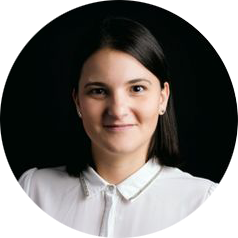María Vanessa Pérez Gómez
Support for the Intensification of Research Activity


March 25, 2024
Dr. María Vanessa Pérez Gómez carries out her clinical work at the Hospital Universitario Fundación Jiménez Díaz, part of the Quirónsalud Group, since 2010 when she began specialized training studies at this institution. She is currently responsible for the monographic consultation on familial nephropathies and the clinical trials unit within the Nephrology and Hypertension Service of the IIS-FJD. She has an extensive research background that began in 2012 with her first scientific publication. She has contributed to the development of 61 publications and completed her doctoral thesis in 2017 at the Universidad Autónoma de Madrid. As a result of her thesis, she obtained a patent, granted in August 2023. In 2022, she was awarded her first FIS project as Principal Investigator: Identification of renal risk biomarkers in Alport's disease.
Project Summary and Importance for Clinical Practice
Title: Advancing in the Early Diagnosis of Renal Disease – If I Can Predict It, I Can Prevent It
Chronic kidney disease (CKD) is one of the leading causes of death worldwide. Hereditary kidney diseases (HKD) account for at least 10% of CKD in adults. Alport syndrome (AS) is the second most frequent cause of HKD. It exhibits a broad phenotypic variability, both inter- and intrafamilial, especially in the most common form (autosomal dominant: ADAS), ranging from the so-called benign familial hematuria to early renal failure. There are no reliable early biomarkers for AS with a risk of renal failure. Better risk stratification will allow for the early initiation of nonspecific CKD treatment and enrich clinical trials with high-risk patients for new treatments. Thus, the project’s general objective is to identify new biomarkers that allow for risk stratification of unfavorable outcomes and monitoring the response to treatment in AS patients.
Specific objectives include testing new renal risk biomarkers identified through three complementary approaches. The first approach is hypothesis-based, where previous results from our group have identified uGDF15 and uEGF as risk markers in other nephropathies. The second approach is an unbiased strategy to identify potential AS-specific markers or those shared with other nephropathies by cross-referencing three preclinical renal transcriptomic databases: Fabry, ureteral obstruction (proprietary), and AS (GEO). The third approach is urinary peptidomics, testing two peptidomic signatures (CE-MS) that Dr. Pérez’s research group has contributed to developing (CKD273 for CKD and IgAN237 for IgA nephropathy, a hematuric nephropathy like AS), with the potential to develop a specific peptidomic signature for AS. To test these biomarkers, the RICORS2040 multicenter cohort of 200 AS patients has been established, in which the relationship between urinary biomarkers and baseline status, as well as their evolution over 3 years (this project) and longer-term (future projects), will be explored.



